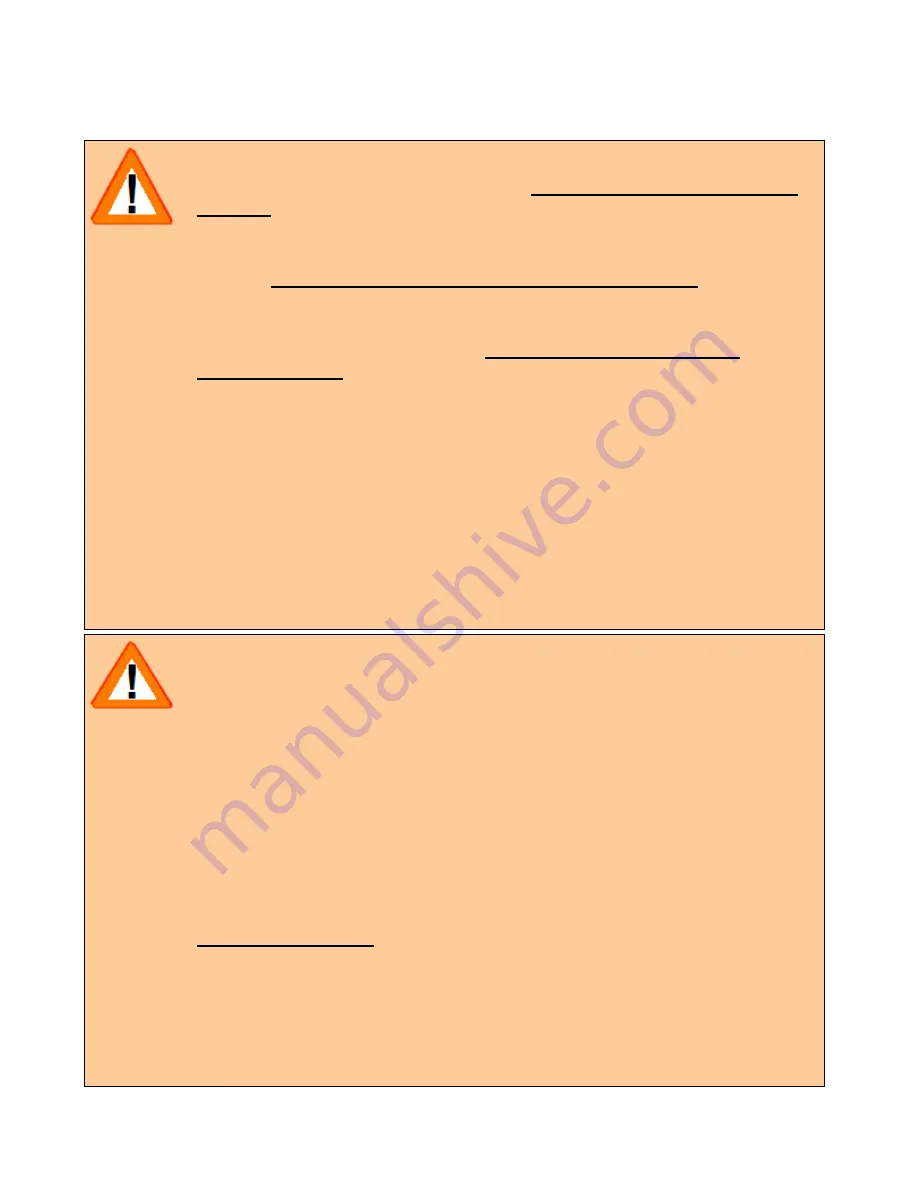
SCWD-QS (12/16)
Page 11
Compressor units are shipped from the factory with a low pressure nitrogen holding charge. Carefully
relieve the holding charge when the compressor unit is being prepared to connect refrigerant system
piping.
Caution!
REFRIGERANT PIPING CONNECTIONS
Refrigerant joints are to be brazed with 15% silver content brazing
alloy, utilizing the NITROGEN BRAZING PROCESS.
NITROGEN BRAZING PROCESS
PURPOSE:
Utilize the NITROGEN BRAZING PROCESS on all brazed refrigerant
piping connections. This process eliminates oxidation products from
inside joint surfaces.
TECHNIQUE:
“Trickle” nitrogen gas at 1-2 psi pressure through the joint area being
brazed, to displace the oxygen. When oxygen has been displaced,
turn off the nitrogen, and relieve the pressure at the joint to
atmospheric prior to brazing.
CONSEQUENCES:
Failure to displace oxygen with nitrogen at the brazed joint will result
in particulate matter being released into the system. The result is
discoloration of refrigerant oil, contamination of the system and
possible system failure.
Caution!
This compressor unit is equipped with
Copeland Ultra 32-3MAF Polyol
Ester Oil
(POE). This is the only brand and type of oil that is
recommended for use with ETI compressor units.
POE oil absorbs significant amounts of moisture from the air very
rapidly. Exposure of the POE oil to air must be minimized. Even a few
minutes of exposure to air can be harmful to the system.
After the initial nitrogen holding charge has been released from the
compressor unit, it is critical that air not be allowed to enter the
compressor unit during the process of preparing compressor unit
refrigerant connections (tube cutting, deburring, cleaning, brazing, etc).
To ensure air does not enter the compressor unit while preparing
refrigerant connections, “trickle” dry nitrogen through the compressor
unit, entering at the access port nearest the Active Charge Control
(ACC), to keep airborne moisture out of the compressor unit and the
POE oil.
Complete preparing and brazing all compressor unit refrigerant
connections at one setting to minimize exposure of open connections
to air. Failure to implement the above precautions will result in an
extended period of time to effectively evacuate the system, and may
adversely affect system performance and cause system failure.
Содержание SCWD-024-1C
Страница 15: ...SCWD QS 12 16 Page 15 Figure 7 SCWD Compressor Unit Electrical Schematic Diagram 230 1 60...
Страница 16: ...SCWD QS 12 16 Page 16 Figure 8 SCWD Compressor Unit Electrical Schematic Diagram 230 3 60...
Страница 17: ...SCWD QS 12 16 Page 17 Figure 9 SCWD Hydronic Heating Cooling Water Heating Sytem Application...
Страница 18: ...SCWD QS 12 16 Page 18 Figure 10 SCWD Hydronic Heating Cooling Water Heating System Field Wiring Diagram...
Страница 20: ...SCWD QS 12 16 Page 20 Figure 11 SureStart Mode of Operation...
Страница 31: ...SCWD QS 12 16 Page 31 Figure 14 Disassembled Plug Connector...
Страница 38: ...SCWD QS 12 16 Page 38 Figure 23 SCWD Internal Flow Schematic...
Страница 39: ...SCWD QS 12 16 Page 39 Figure 24 SCWD Piping...
Страница 41: ...SCWD QS 12 16 Page 41 Figure 25 Evacuation of SCWD System...
Страница 43: ...SCWD QS 12 16 Page 43 Figure 26 Initial Charge of SCWD System...
Страница 45: ...SCWD QS 12 16 Page 45 Figure 27 Final Charge of SCWD System...
Страница 48: ...SCWD QS 12 16 Page 48 Figure 31 Start Up Process...
Страница 60: ...SCWD QS 12 16 Page 60 Figure A1 SCWD Compressor Unit Electrical Schematic Diagram No SureStart 230 1 60...
Страница 61: ...SCWD QS 12 16 Page 61 Figure A2 SCWD Compressor Unit Electrical Schematic Diagram No SureStart 230 3 60...












































